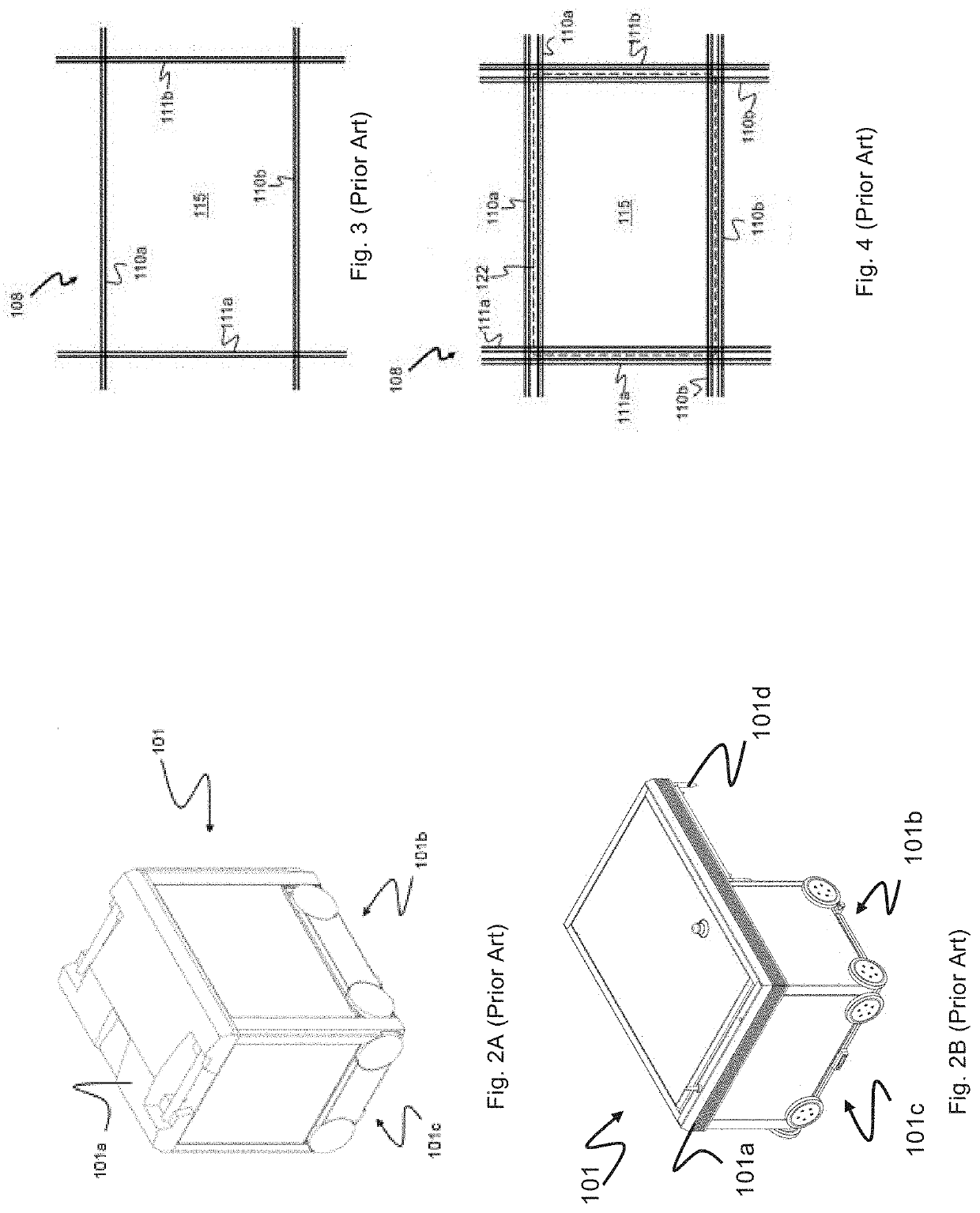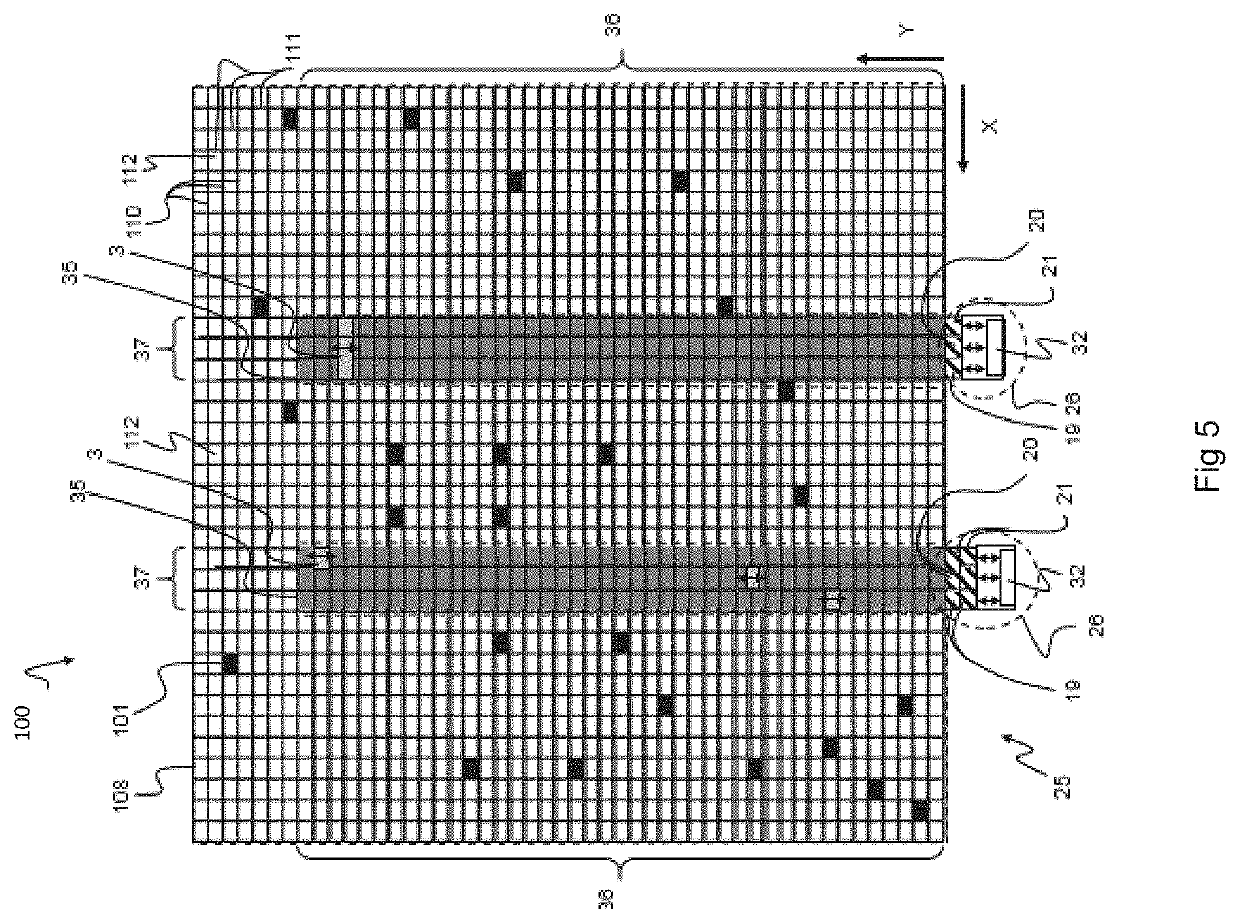Transport of container handling vehicles between storage grids of different heights
a container and transportation technology, applied in the field of automatica storage facility, can solve the problems of affecting the operation of the automated storage and retrieval system, and affecting the safety of the container handling vehicl
- Summary
- Abstract
- Description
- Claims
- Application Information
AI Technical Summary
Benefits of technology
Problems solved by technology
Method used
Image
Examples
Embodiment Construction
[0112]In the following, embodiments of the invention will be discussed in more detail with reference to the appended drawings. It should be understood, however, that the drawings are not intended to limit the invention to the subject-matter depicted in the drawings.
[0113]Particular embodiments of a storage structure of an automated storage and retrieval system 1 are shown in FIGS. 7-20.
[0114]FIG. 1 shows the storage grid 104 of each storage structure which constitutes a framework 100 which may for example comprise a total of 1800 grid columns 112, where the width and length of the framework corresponds to the width and length of 36 and 50 grid columns 112, respectively. The top layer of the framework 100 is a track system 108 onto which a plurality of vehicles 3,101 are operated.
[0115]FIG. 5 shows two types of vehicles 3,101, indicated by black and light grey rectangles. The black rectangles symbolize exemplary positions of container handling vehicles 101 intended to transport stora...
PUM
 Login to View More
Login to View More Abstract
Description
Claims
Application Information
 Login to View More
Login to View More - R&D
- Intellectual Property
- Life Sciences
- Materials
- Tech Scout
- Unparalleled Data Quality
- Higher Quality Content
- 60% Fewer Hallucinations
Browse by: Latest US Patents, China's latest patents, Technical Efficacy Thesaurus, Application Domain, Technology Topic, Popular Technical Reports.
© 2025 PatSnap. All rights reserved.Legal|Privacy policy|Modern Slavery Act Transparency Statement|Sitemap|About US| Contact US: help@patsnap.com



